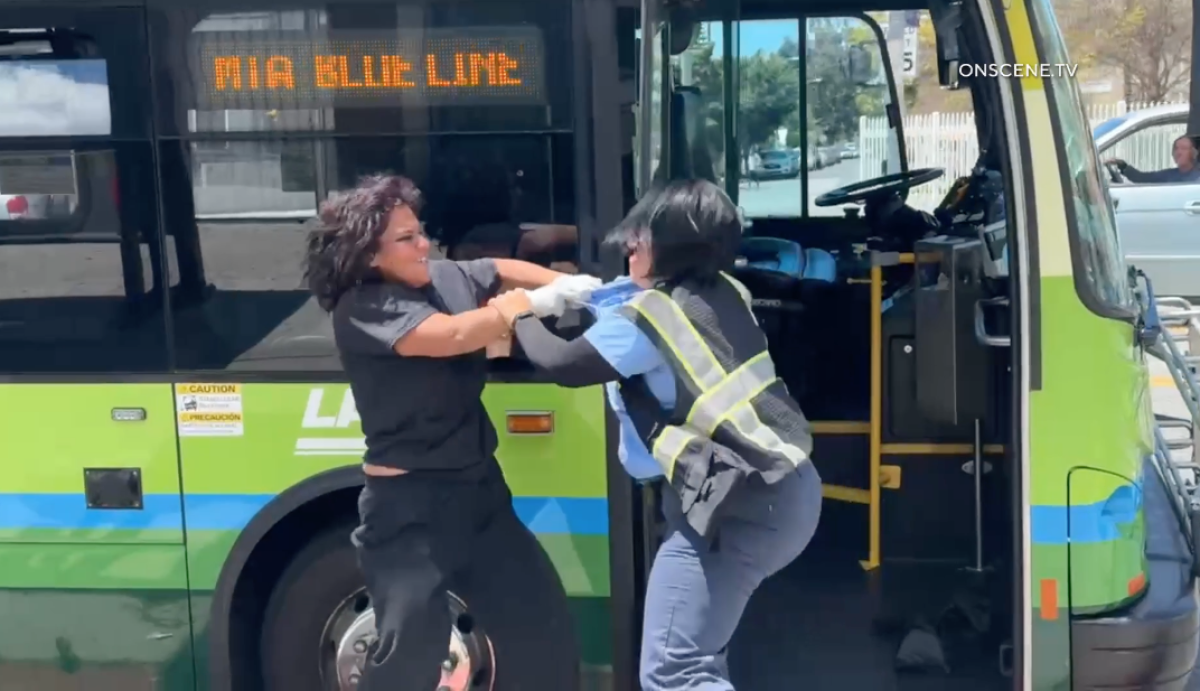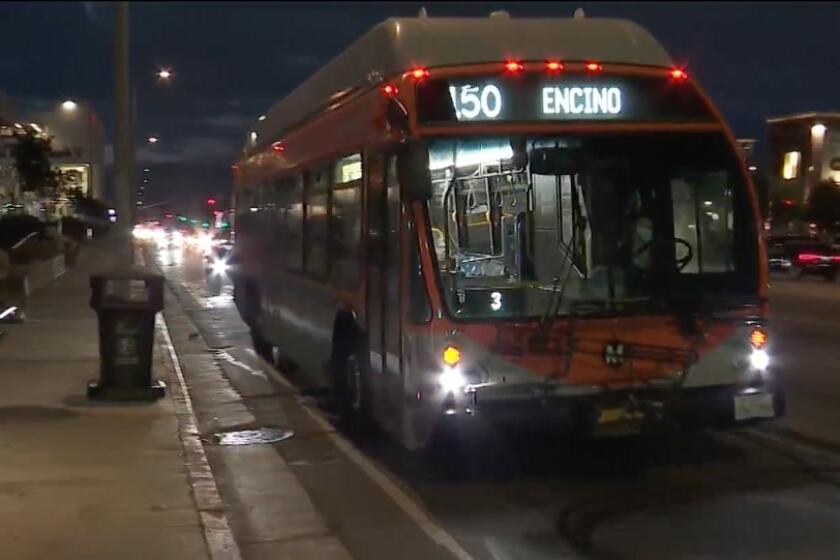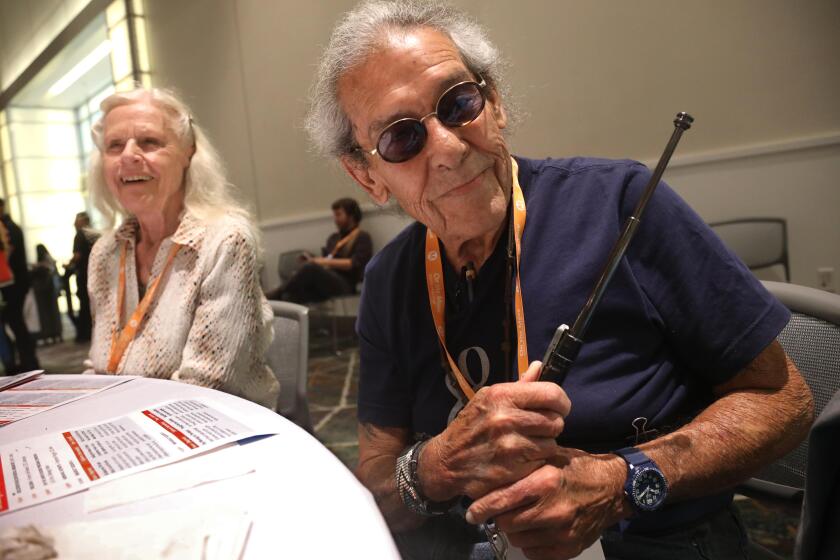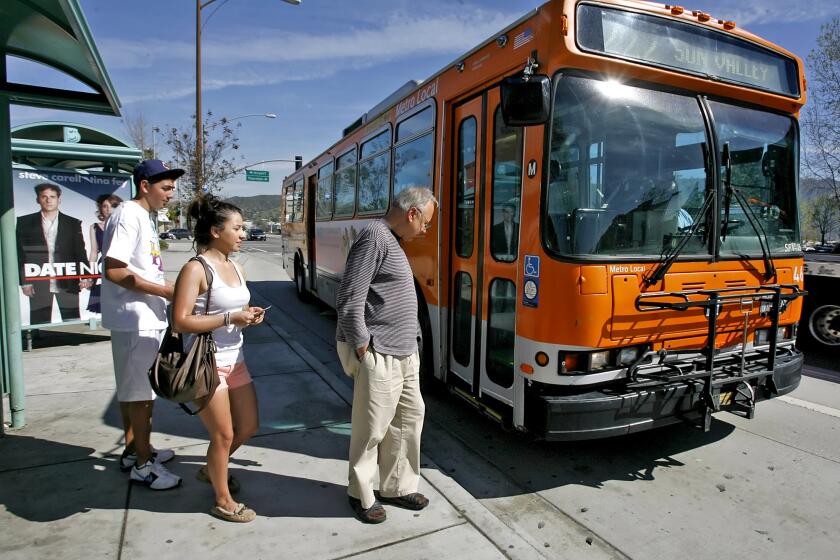‘Panic buttons to nowhere’: L.A. bus drivers say safety measures can’t protect them from violent attacks

Panic buttons in some Los Angeles shuttle buses connect to no one, plexiglass shields around drivers were not intended to stop physical attacks, and union officials representing drivers say other safety measures touted to protect drivers are just not cutting it.
“There has to be more,” said Lourdes Garcia, secretary-treasurer and principal officer of Teamsters Local 572, the union representing the city’s DASH shuttle drivers. “It’s the time to just be honest about what’s going on.”
A series of violent attacks has raised concerns about the safety of bus drivers, prompting the Los Angeles County Metropolitan Transportation Authority to declare an emergency over the attacks.
During a June 5 L.A. City Council Transportation Committee meeting, L.A. Department of Transportation officials touted panic buttons on DASH buses, plexiglass surrounding drivers, training, video cameras and radios as measures to keep drivers safe.
But drivers and union officials say many of the safety features fall flat. The panic buttons that drivers can press, for example, don’t connect to a dispatch center or any emergency service. Instead, the button plays a recording directing passengers or others to call 911.
“You might as well just be honking your horn,” Garcia said. “You have to rely on someone, a Good Samaritan, to hear it or, if you’re on the freeway, someone may not hear it.”
Attacks on Metro bus drivers highlight dangers that operators face. Serious attacks on transit workers have tripled nationally over the last 15 years.
The concerns surrounding bus driver safety have increased after several reported attacks against drivers, including some that were caught on video.
In one incident May 5, a female passenger attacked a Metro bus driver at Central Avenue and Jefferson Boulevard.
The woman is seen pushing and punching the female driver, who then kicks the woman in an attempt to get her off her back.
In March, a passenger carrying an airsoft gun hijacked a Metro bus, then crashed into several cars and the Ritz-Carlton hotel in downtown Los Angeles.
Another Metro driver was stabbed in April in Willowbrook in an attack captured on video. The driver can be heard yelling, “Help me! Help me!” during the attack.
Worries over safety prompted hundreds of operators to call out sick in May, delaying dozens of Metro bus routes.
Much of the attention has centered around Metro buses, but officials have also aired concerns about what safety measures are being taken for DASH drivers, who operate the free shuttle service in 27 communities, including downtown Los Angeles. DASH buses feed into the county’s Metro transit system.
Los Angeles police patrolled DASH buses until 2021, when the contract with the agency lapsed. Officials said there had been plans to replace them with safety ambassadors, but they were never implemented.
Adriana Avila, president of Teamsters 572, told the city’s transportation committee that drivers have complained about safety training sessions that have not been held and bus radios that don’t work in several areas of the city.
Metro passengers are scared: ‘I’ve lived in L.A. all my life, and I’ve never seen the level of violence that I’m seeing now. It’s like an insane asylum’
Some radios, she said during the June 5 meeting, don’t work at all.
The plexiglass surrounding drivers, officials noted, was placed there as a precaution for the COVID-19 virus, not to stop unruly passengers.
“When you’re out there, you’re on your own,” Garcia said.
The LADOT, which oversees the DASH buses, is currently working to fix the radio problems, a spokesperson said.
“Ensuring safety for both drivers and passengers on our buses is a top priority for LADOT,” Colin Sweeney, spokesperson for the agency, said in an email. “In some cases, drivers have reported connection difficulties in certain areas of the city such as hillsides and canyons, and LADOT is currently assessing technical solutions to maintain communication with vehicles in transit at all times.”
Sweeney also added that buses undergo pre-trip inspections before each shift to makes sure drivers can connect with dispatch, and that panic buttons are working.
But that is not enough, Councilmember Traci Park, vice chair of the city’s Transportation Committee, said during the June 5 meeting.
About 360 Los Angeles County Metro bus drivers called in sick Friday to protest unsafe work conditions after several assaults, delaying service on at least 40 routes.
“We have removed our law enforcement partners from transit and, in [the Department of Transportation’s] case, never got around to replacing them with ambassadors or anything except plexiglass and panic buttons to nowhere,” Park said. “I feel like our riders and our operators are left out there to fend for themselves, unprotected. Radios and panic buttons and plexiglass here and there doesn’t cut it.”
City officials said they plan to schedule de-escalation training for drivers, and review safety measures that can be enacted to protect drivers, with discussions involving the Los Angeles Police Department, LADOT and union officials.
Garcia said union officials and drivers are encouraged that LADOT and the City Council are now paying closer attention to driver safety and onboard violent incidents, but she noted many of the concerns being addressed were aired by drivers months ago.
“We’ve been telling you this,” she said. “They’ve finally got this sense of urgency to address the issue, and we welcome that.”
More to Read
Sign up for Essential California
The most important California stories and recommendations in your inbox every morning.
You may occasionally receive promotional content from the Los Angeles Times.














